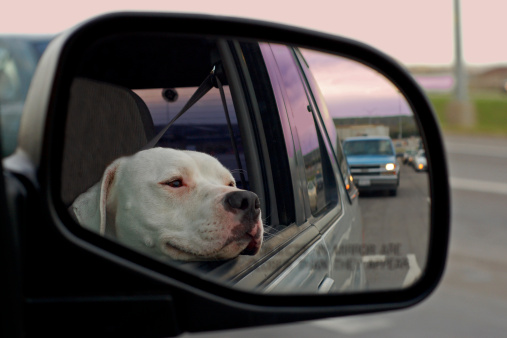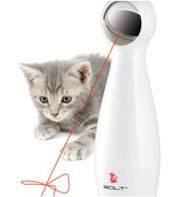Securing Pets for Travel
Share
 Whether you’re headed across town or across country, be sure you consider your pets in your plans. If you do nothing else, be certain you make plans for your dog to travel securely. This could mean a harness and zip line or the security of a crate – whichever you choose, be sure to learn how to use it correctly. Thousands of people and their pets are injured in auto accidents each year because a dog or cat was not properly secured. Here is a quick overview of the ways you can drive safely with your pets.
Whether you’re headed across town or across country, be sure you consider your pets in your plans. If you do nothing else, be certain you make plans for your dog to travel securely. This could mean a harness and zip line or the security of a crate – whichever you choose, be sure to learn how to use it correctly. Thousands of people and their pets are injured in auto accidents each year because a dog or cat was not properly secured. Here is a quick overview of the ways you can drive safely with your pets.
Use “Restraint”
Only 17 percent of dog owners who regularly drive with their pet use any type of pet restraint. However, an unrestrained 10-lb dog can exert over 500 lbs of force in a 50 mph crash and an unrestrained 80-lb dog can exert approximately 2400 lbs of force when thrown forward at 30 mph! Here are a few tips to keeping your pet safe: Don’t rely on airbags! There are scores of pets killed every year by airbags, so just like young children; your pet should never travel in the front seat. Don’t let your pet BECOME an airbag: Any time you allow your pet to sit on your lap, you risk turning your beloved dog into an airbag – a very scary proposition for anyone. Be sure your pets are properly restrained.
Crates
If you’re using a crate, be sure it is secured to the floor of vehicle and has adequate ventilation. Crates can become very warm or very cold depending on the weather.
Harness
Test your harness to ensure a snug, comfortable fit for your pet. A harness should always be attached to a zip line or pets fastened to a seat belt. Collars should not be used to secure your pet.
Barriers
Even when using a net or barrier to keep pets from the front seat, your pets should be secured by a harness and zip line or seatbelt as well. We prefer the Pet Net as it’s easily adjustable for any size vehicle and is the most reasonably priced.
Booster seats
These are great for small pets, but be sure your dog is wearing a harness and that the harness is secured to the seat. Keep in mind that the front airbag system in a vehicle can be deadly to a dog during a crash if sitting in the front seat, even if restrained. It’s best to give them a booster seat in back.
When we travel with Cheiss, which is often, he always wears a harness and is attached to a zip line. This is attached to a Kurgo zip line, which runs across the floor in the back. The harness is an added protection in the event of an accident because we want to make sure that if Cheiss is thrown forward, the harness offers support to stop him from becoming a 2,700-pound projectile or snapping his neck – as a leash and collar can do.
Learn more about traveling safely with pets:
- 10 Ways to Travel Safely with Your Dog this Summer
- 5 Ways to Secure Your Pet During Travel
- PetsWeekly Holiday Travel Checklist
- Checklist for Pet Travel Success
- Traveling with Two Cats on a 2,800 Mile Trip



